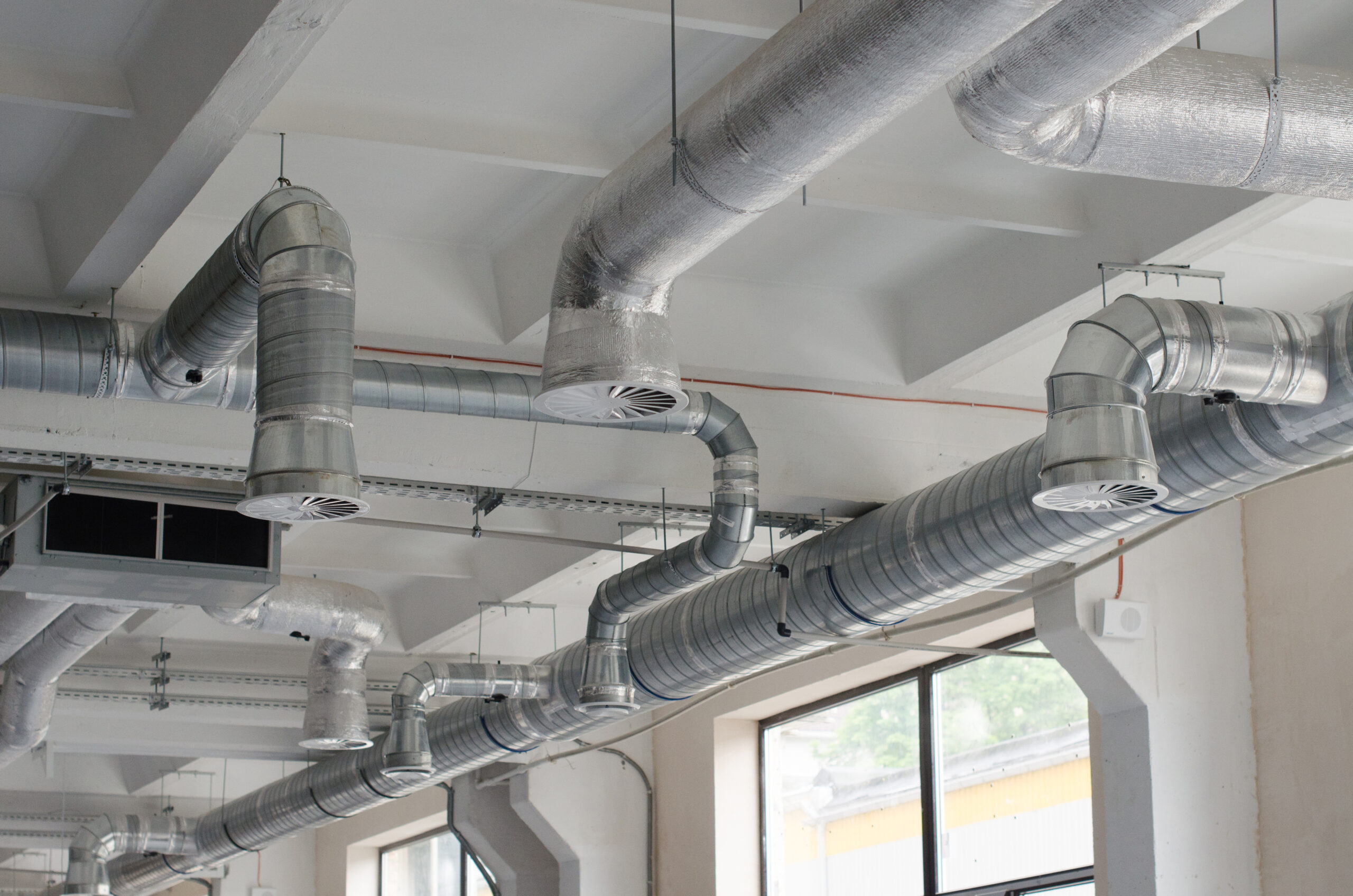We've noticed this post on What Are Plumbing Vents and Why Are They Important? listed below on the net and thought it made sense to quickly share it with you in this article.

Correct ventilation in plumbing systems is often forgotten, yet it is important for preserving the functionality and safety and security of your home's pipes. Air flow aids control air pressure, stop the buildup of hazardous gases, and make sure the efficient removal of waste. In this overview, we will certainly discover the value of proper plumbing air flow, how it works, and the benefits it offers your plumbing system.
Understanding Ventilation in Plumbing
Air flow in pipes describes the network of pipelines that permit air to flow through the drain system. These vents offer multiple functions, consisting of controling air pressure within the pipelines, protecting against drain gases from getting in the home, and helping in the smooth circulation of wastewater.
Exactly How Ventilation Works in Pipes Systems
Atmospheric Pressure Guideline
Appropriate air flow maintains well balanced air pressure within the plumbing system. When water streams through pipes, it displaces air. Without appropriate air flow, this displacement can produce negative pressure, causing reduce drains pipes or siphoning of water from catches, which can cause undesirable smells to permeate right into the home.
Protecting Against Drain Gas Buildup
Among one of the most vital features of plumbing vents is to prevent sewage system gases, such as methane and hydrogen sulfide, from building up within the home. These gases can posture severe health threats and are highly combustible. Vent pipes permit these gases to get away safely outdoors.
Aiding in Waste Elimination
Air flow aids in the effective elimination of wastewater by stopping airlocks in the drain system. When air can flow freely with the vents, it allows water and waste to move efficiently through the pipelines, lowering the risk of clogs and backups.
Sorts Of Plumbing Vents
Main Heap Vent
The main pile air vent, additionally known as the air vent stack, is the key vent in a pipes system. It prolongs from the primary drainpipe line up via the roofing, allowing gases to run away and fresh air to get in the system.
Branch Vent
Branch vents link to the primary pile vent and offer specific components, such as sinks, commodes, and showers. These vents make certain that each component has sufficient air flow to function appropriately.
Air Admittance Shutoff (AAV).
An Air Admission Valve (AAV) is a one-way shutoff that permits air to go into the pipes system without the demand for a traditional air vent pipeline expanding via the roof. AAVs are commonly made use of in improvements or areas where setting up a conventional air vent is unwise.
Signs of Poor Ventilation in Plumbing.
Slow Draining Fixtures.
If your sinks, tubs, or bathrooms are draining pipes gradually, maybe an indication of bad ventilation. Insufficient air circulation can produce a vacuum impact, making it difficult for water to drain pipes properly.
Gurgling Sounds.
Gurgling noises coming from drains pipes are frequently a result of air being sucked through water catches as a result of unfavorable pressure in the pipelines. This is a clear indication of inadequate ventilation.
Unpleasant Odors.
Drain odors inside your home are a warning that your pipes system is not properly ventilated. This might indicate that sewer gases are not being sufficiently aired vent outside, causing possibly harmful conditions.
Common Ventilation Mistakes.
Inadequate Vent Sizing.
Making use of small air vent pipes can lead to poor air flow and pressure imbalances in the system. It's vital to make use of vents that satisfy the particular requirements of your plumbing system.
Improper Vent Placement.
Positioning vents also much from the components they offer can reduce their efficiency. Proper placement guarantees that air can move easily and successfully through the system.
Disregarding Code Needs.
Building ordinance supply specific guidelines for plumbing ventilation. Neglecting these codes can cause a system that falls short to work properly and might bring about expensive repair work or carcinogen.
Benefits of Appropriate Ventilation.
Enhanced System Effectiveness.
Correctly ventilated plumbing systems operate extra effectively, with less obstructions, faster draining pipes, and much less pressure on the pipelines. This effectiveness extends the life expectancy of the plumbing system.
Improved Air High Quality.
By protecting against sewer gases from entering your home, proper ventilation contributes to far better indoor air high quality, making your living setting healthier and much more comfortable.
Preventing Water Damages.
Sufficient ventilation aids avoid water from being siphoned out of traps, which can cause sewage system gases entering the home and creating water damage with time.
Actions to Make Sure Correct Ventilation.
Consulting Plumbing Codes.
Always speak with regional plumbing codes when developing or customizing your plumbing system. These codes supply the essential standards for appropriate airing vent and ensure your system fulfills safety standards.
Routine Examination and Upkeep.
Normal evaluations can assist determine possible ventilation problems prior to they come to be significant problems. Maintenance jobs, such as cleaning up vent pipelines and looking for blockages, are essential for maintaining the system in good working order.
Expert Installation.
For new setups or major alterations, it's wise to work with a specialist plumbing technician. They have the proficiency to make sure the ventilation system is correctly made and installed according to code.
Verdict.
Appropriate air flow is a crucial component of any kind of plumbing system, ensuring that it works effectively and securely. By recognizing the significance of air flow, acknowledging the signs of bad air flow, and taking steps to keep your system, you can protect against costly concerns and secure your home's air top quality.
4 Things You Should Know About Your Plumbing Vents
What Plumbing Vents Are
Also called a vent stack, a plumbing vent is a vertical pipe attached to your drain line that runs through your roof. The plumbing vent pipe, or plumbing air vent, removes gas and odors from your plumbing system and allows fresh air to enter the pipes, helping the water to flow out of the drain pipes.
What Plumbing Vents Do
Plumbing vents have two basic functions. One of which is to allow unpleasant smelling wastewater and sewer gasses to escape your plumbing system instead of entering your home. Plumbing vent pipes are typically located on roofs, away from windows, to ensure the fumes exit the home completely.
The other function of the plumbing vent is to move fresh air into your plumbing system. This helps move water through every plumbing fixture in your house, like toilets and sink drains. Think of the way in which you need to let a little air into the bottle as you pour soda in order to make the drink flow smoothly.
Different Types of Plumbing Vents
True vent: This is the most common vent option. In simplest terms, a true vent is a vertical pipe attached to your drain line that exits through the roof. They often function as the main vent that other fixtures can connect to. Re-vent pipe or auxiliary vent: Attached to the drain line near specific plumbing fixtures, re-vent pipes run up and over to connect to the main vent. Common vent: Two plumbing fixtures installed on opposite sides of a wall are typically tied into the vent stack using something known as a sanitary cross. Wet vent: This venting option operates as a drain pipe and a vent at the same time. Wet vent drainage systems drain water from one fixture while venting the air from another. Although they’ve been used for over 100 years, wet vent systems have only recently been added to the plumbing code in many areas. If you’re planning on installing one in a bathroom remodel, make sure you check your local code prior to construction. Loop vent: For free-standing fixtures like kitchen island sinks, loop vents are ideal. These vent pipes run under the floor, rise from the P-trap, and create a loop inside the cabinet sink. Air admittance valve: An AAV is a one-way mechanical valve typically installed at the site of the plumbing fixture. AAVs allow venting to occur without having to tie into a larger venting system. They’re ideal for venting fixtures where you aren’t able to easily connect to an existing vent system. Common Plumbing Vent Issues
Although vent pipes typically don’t have water flowing through them, they’re still subject to many typical plumbing issues. For example, clogs are one of the most common problems associated with sewer vent pipes. If your vent pipe gets clogged, all of your plumbing fixtures tied into the vent stack will be affected.
A sink with a slow drain that bubbles and gurgles or a strong sewage smell around your toilet are both indicators that your toilet vent pipe is clogged. Because most vent pipes exit through the roof, old leaves, twigs or even a bird’s nest could be clogging the pipe.
Clogs in your vent pipe system cause a buildup of negative pressure, meaning that water won’t be able to flow out of your home very well. It’s similar to putting your finger over the opening of a straw to trap water inside. When you remove your finger, the water is able to flow out of the straw.
If you suspect you have any blockage in your vent, make sure you have a professional come examine the situation. Left unchecked, a blocked air vent can lead to other costly repairs, like leaks and sediment buildup.
Under Pressure
Pipe vents are essential aspects of a home’s plumbing system. Owning a home means learning about all sorts of things you never put much thought into before. But by understanding as much as you can about the important systems of your home, you can keep those budgets intact and those anxiety levels low.
https://www.homeserve.com/en-us/blog/home-improvement/plumbing-vents/

I'm very eager about What Are Plumbing Vents and Why Are They Important? and I really hope you enjoyed reading the entire piece. Sharing is caring. One never knows, you may be doing someone a favor. Thank you for your time. Please check our blog back soon.
Request Estimate
 Devin Ratray Then & Now!
Devin Ratray Then & Now! Brandy Then & Now!
Brandy Then & Now! Hailie Jade Scott Mathers Then & Now!
Hailie Jade Scott Mathers Then & Now! Heather Locklear Then & Now!
Heather Locklear Then & Now! Rossy de Palma Then & Now!
Rossy de Palma Then & Now!